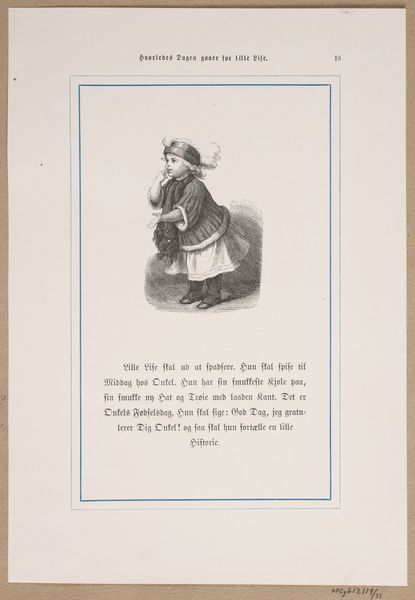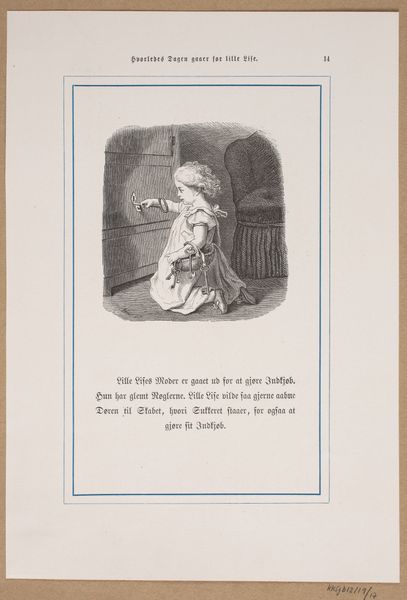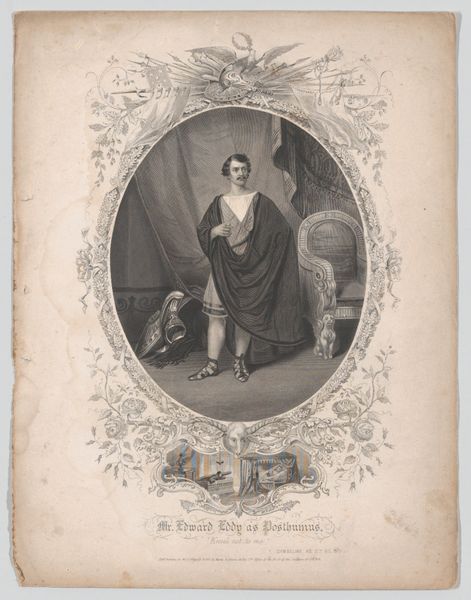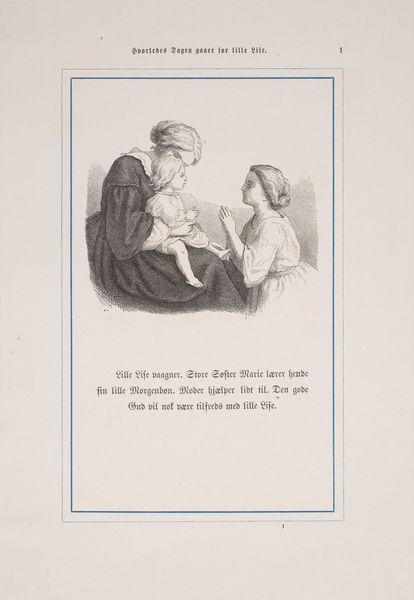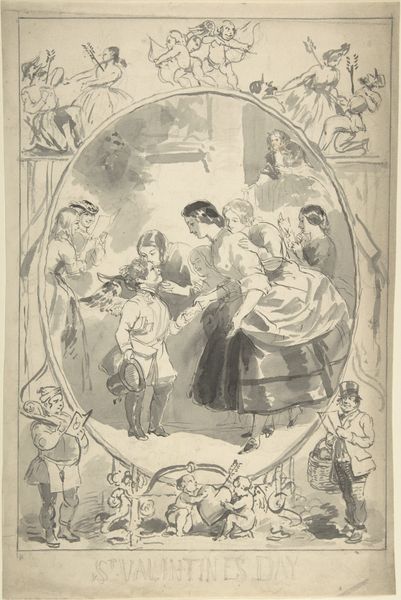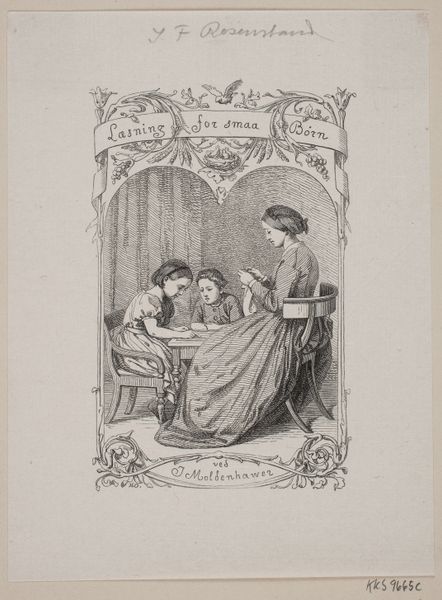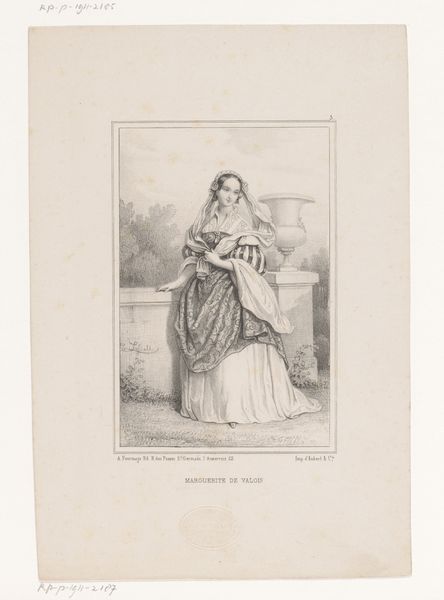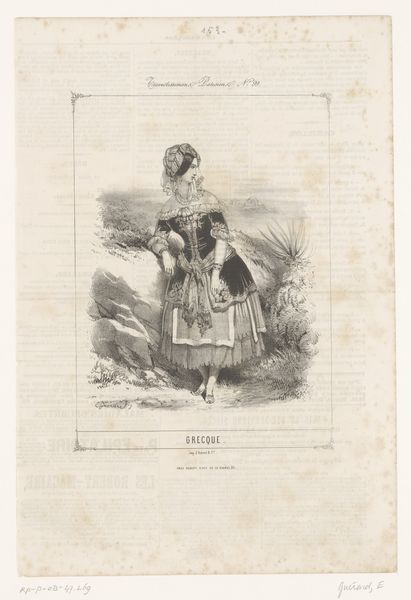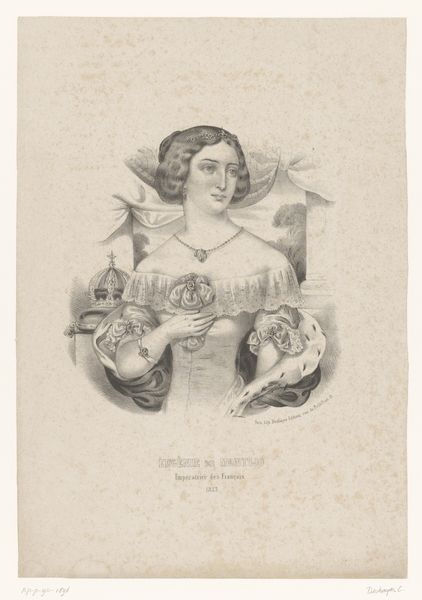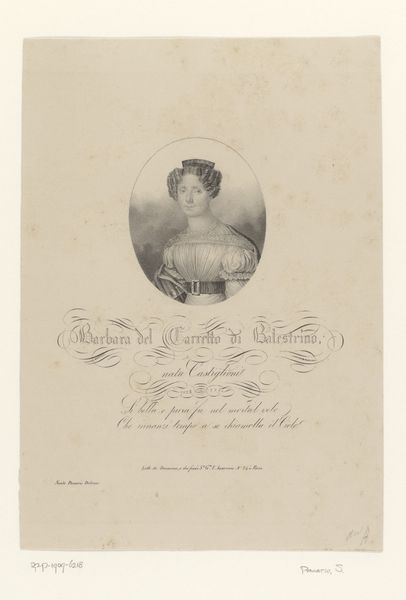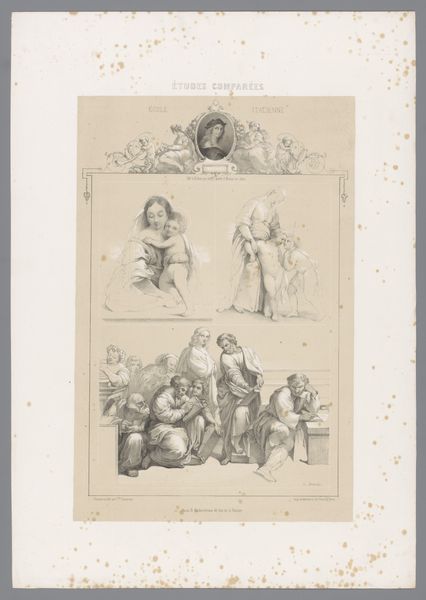
Illustration til "Hvorledes Dagen gaaer for Lille Lise" 1863
0:00
0:00
Dimensions: 271 mm (height) x 187 mm (width) (bladmaal)
Editor: This is an illustration entitled "Hvorledes Dagen gaaer for Lille Lise," or "How the Day Goes for Little Lise," created by Lorenz Frølich in 1863, using drawing and woodcut print techniques. I’m struck by its intimate, almost melancholic mood, despite being intended as a children’s illustration. How do you interpret this work? Curator: The visual organization commands immediate attention. Notice the subtle gradations of light and shadow achieved through the intricate woodcut technique. These tonal variations give depth and form to the figures of the mother and child. What strikes you about the composition? Editor: The framing is interesting; it’s not a straightforward rectangle. The floral and textual elements intertwine, creating a softer edge. The lettering feels integral to the piece. Curator: Precisely. The text is not merely descriptive; its inclusion within the decorative framework enhances the image's symbolic weight. Have you observed the lines used to define depth and texture? Editor: Yes, particularly in the drapery and the mother's hair, there's a delicate intricacy. This focus on linear detail really guides the eye. It is romantic but more than usually emphasizes the form and technique to depict it. Curator: Agreed. The Romantic style manifests not just in subject matter, but in Frølich's exploitation of form and skillful control of medium to create a compelling image. By dissecting its structure, composition, and technique, we discern a powerful evocation of emotion through strictly formal means. Editor: It is like we analyzed what constitutes a ‘mother and child’ artwork with geometry. I now see this in the formal relationship of line and light. Curator: Exactly. That close visual and formal analysis lets us move beyond initial subjective response to build toward a comprehensive understanding of the work.
Comments
No comments
Be the first to comment and join the conversation on the ultimate creative platform.
